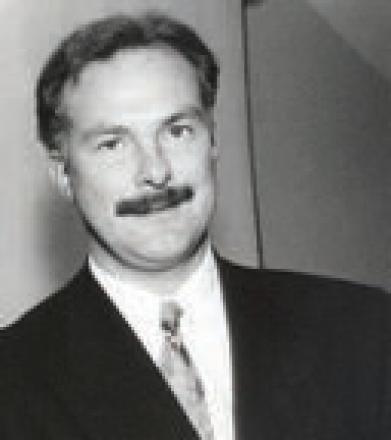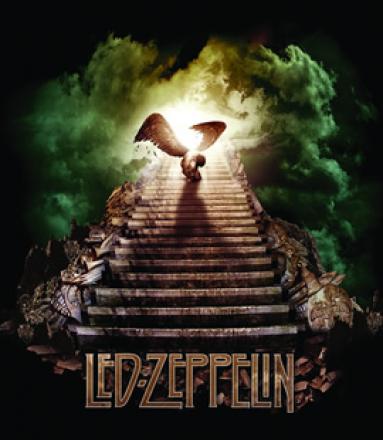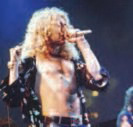Commerce'80: From chalk to cheese (hoagies, that is)
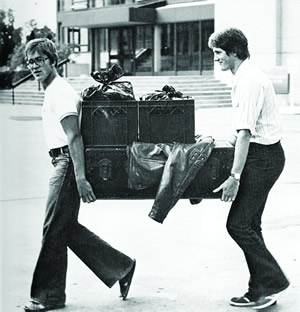
“On The first Day, Carl Lawrence Told Us To Look To The Left And Then To The Right And That In Four Years Only One Of Us Would Still Be There.”
If the sound of fingernails on a blackboard produces anxiety, imagine sitting in a classroom with a teacher who eats chalk. No problem, says Fred Jaques, BCom’80, who well remembers Professor Frank Collom chewing on the white stuff. “He was one of the best teachers I had, but he told us he ate chalk because he had terrible ulcers. He got his calcium carbonate by chewing it.”
Fred, a Québec native, started at Queen’s in 1976 at the height of the Québec separatist movement. “Parti Quebecois leader René Lévesque had just come to power, and a lot of things were changing. There was quite an exodus of my generation to Ontario.”
Many students left ‘la belle province’ because pursuing post-secondary education in Québec meant completing two more years of CEGEP after high school. So Fred and his buddies arrived at Queen’s as fresh-faced 17-year-olds. It wasn’t long before reality set in, courtesy of Dean Carl Lawrence and that classic professors’ gambit with freshmen. “On the first day, he told us to look to the left and then to the right and that in four years only one of us would still be there. That was a wakeup call.”
Several other professors stood out as well. There was Rick Jackson, who taught labour relations, and Bill Cannon, who taught what Fred refers to as the ”dreaded financial accounting courses.” Classes were held in Dunning Hall. As Fred recalls, “Dunning 10 was the location of our home class with its very old style theatre desks. However, Dunning couldn’t accommodate all of us, so half of our courses were held next door in Mackintosh-Corry.”
Typewriters and notebooks were de rigueur, the days of laptops and the Internet still years away. Some courses offered the chance for real world learning, such as the consulting course that required the class to create a business plan for a Kingston clothing store. “If they’d followed our business plan, they wouldn’t be in business anymore,” he laughs.
In his first year, Fred lived in Morris Hall, which had just become a co-ed residence. “There was quite a distinct culture around each residence. When people found out you were in Morris, you were categorized as being very quiet and mature. It was very tame, completely unlike McNeil or Vic Hall, which were renowned for their parties.”
Students also stayed fairly close to home when socializing. The drinking age was 18, and Fred remembers going to the Queen’s Pub on campus and the downtown Tap Room for a draft. “Trays of draft were $2 or 25 cents a glass.” There was also the odd outing across the border. “A Friday night adventure involved getting a few buddies together and doing a road trip to A-Bay (Alexandria Bay in upstate New York) for some fun, American-style evenings and different beer,” Fred recalls. Another memorable activity was trying to outwit the night watchman at Victoria Hall, whose job it was to keep out ‘gentlemen callers.’
“Trays Of Draft At The Tap Room Were $2 Or 25 Cents A Glass.”
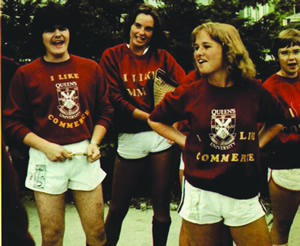 Getting 'branded' at Frosh Week Classroom attire was decidedly casual. Fred and his classmates favoured jean jackets and bellbottom pants. Long hair on both the guys and the girls and “big ugly glasses” were all the rage. While Led Zeppelin and Deep Purple could be heard blaring from student residences, Fred was fortunate to be part of the first generation to enjoy the music of Kingston’s own band, The Tragically Hip. He recalls attending a ‘Hip’ concert at Jock Harty Arena long before the band spiralled to international fame. A cherished souvenir from his time at Queen’s was Fred’s beloved Commerce jacket. “I remember the ritual of purchasing my leather jacket. We had to design year crests, which were painted outside Dunning Hall on the sidewalk for judging. The winning crest went on the jacket. They were delivered in November, and I remember sleeping in mine the first night I got it, I was so proud! That was how you broke it in.”
Getting 'branded' at Frosh Week Classroom attire was decidedly casual. Fred and his classmates favoured jean jackets and bellbottom pants. Long hair on both the guys and the girls and “big ugly glasses” were all the rage. While Led Zeppelin and Deep Purple could be heard blaring from student residences, Fred was fortunate to be part of the first generation to enjoy the music of Kingston’s own band, The Tragically Hip. He recalls attending a ‘Hip’ concert at Jock Harty Arena long before the band spiralled to international fame. A cherished souvenir from his time at Queen’s was Fred’s beloved Commerce jacket. “I remember the ritual of purchasing my leather jacket. We had to design year crests, which were painted outside Dunning Hall on the sidewalk for judging. The winning crest went on the jacket. They were delivered in November, and I remember sleeping in mine the first night I got it, I was so proud! That was how you broke it in.”
- 1 of 2
- ›

